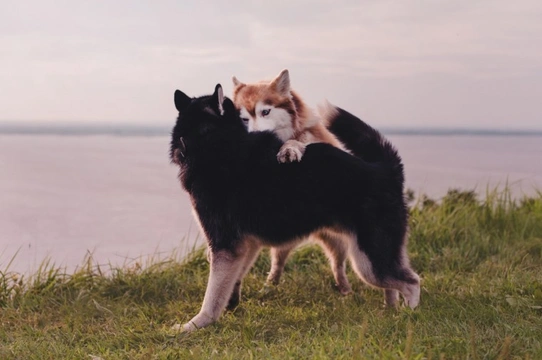
Common misunderstandings about dominance in dogs, corrected
Whilst everyone thinks they have a good idea of what a dominant dog is, this is something that is widely misunderstood by even some experienced dog lovers.
Pack structure and the alpha or dominant role within the pack is a very real concept; but it is also one that is commonly very poorly understood too! One of the main things that dog lovers often get wrong about pack structure is the rigidity of the hierarchy itself.
Dominance is not a fixed metric, and if you watch groups of dogs playing together over a reasonably long period of time when the members of the group come and go and are replaced by newcomers such as in a dog park, you might notice something interesting happening.
The dominant dog in a fluid, group situation like you might see at the dog park is apt to change over time, as newcomers challenge for the position, the initial leader goes home or takes a break, or even gets too tired from play to defend the role in a meaningful way.
Additionally, dogs can and do engage in role play, so you might see a big, powerful dog that exudes authority playing around with a puppy and letting the puppy take liberties and act out the role of alpha without correcting them!
All told, this means that dominance in dogs is complex, and easy to misunderstand; and so in this article we’ll outline in more detail what dominance really means in canine terms, and correct some common misunderstandings on the subject too.
Read on to learn more.
What is a dominant dog?
A dominant dog might, as mentioned, not behave in the same way or display the same behaviours in every situation or with every set of dogs they meet.
This means that whilst some dogs will be the dominant one most or virtually all of the time, dominance is situational, and better described as a set of behaviours rather than a specific dog or action a dog takes.
Dominant dogs are confident dogs, which usually means they’re calm; so a dominant dog is not a dog barking, making a huge fuss, behaving inappropriately or being aggressive, as these are not confident behaviours. Aggression, for instance, is either conditioned or rooted in fear.
A non-dominant dog can absolutely be trained to be aggressive, and a dog that is fearful and so, aggressive is not confident and so, not dominant either.
A dominant dog is the leader in the given pack or situation, the one that the other dogs defer to. You can read more about identifying a dominant dog here.
The natural traits of a dominant dog
A dog that displays a natural tendency to dominance or that is dominant in a given situation possesses at that time a number of traits. These can once more be situational and fluid, but may include:
- The lack of another dog above them in the pecking order, or one to which the dog in question defers. This is important, because as mentioned, the dominant dog or leader of one pack might not be the alpha of another!
- A dominant dog is also a confident dog, which means that they’re relaxed and not fearful; or are the least fearful of all of the dogs present.
- They command respect and authority from the other dogs present, who defer to them; after all, dominance is relative, and if there are no other dogs to relate to, there is no dominant role to take.
- A dominant dog within a group will largely make the rules, enforce them, check bad behaviour, get first go at resources, and potentially assert obvious authority in terms of body language and physical and verbal cues.
- They might also be more than willing to engage in role reversal play, pretending to yield to what is in reality a more submissive dog; which is the absolute benchmark of a confident and naturally dominant dog!
Dominance and aggression are not the same
Aggression in dogs is often mistaken for dominance in dogs but this is absolutely not the same thing. Aggression is caused by a cue that triggers a response in the dog, most likely fear – and a dog that is afraid is not dominant to the cause of that fear, ergo, aggression is not dominance.
In rarer cases, a dog can be trained for aggression, whether or not they’re dominant, but again, this is different.
The dominant role is a very responsible one
The pack leader position is about more than being in charge and getting first dibs on everything. It is also a position of great responsibility – for the survival and safety of the pack, getting enough resources, keeping order, defending from threats – and this is stressful and time consuming.
This means that much like the owner of a business or the manager of a department, it’s not all perks and benefits for the alpha dog, and being in charge and responsible for the pack as a whole is time consuming and can be very stressful, whilst the other pack members don’t have to worry about making hard choices, just doing as directed!



